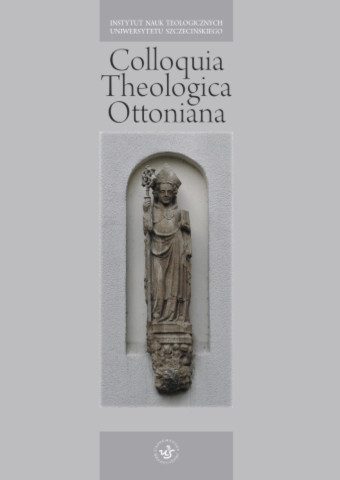
ISSN: 1731-0555
eISSN: 2353-2998
OAI
DOI: 10.18276/cto.2018.1-04




Issue archive /
1/2018
Tajemnica Jezusa - Mesjasza i Syna Bożego, który stał się Człowiekiem (J1, 1-14)
(Mystery of Jesus - Messiah and Son of God who becam a Human Being (J1,1-14))
| Authors: |
Henryk
Witczak
Wydział Teologii Katolickiego Uniwersytetu Lubelskiego |
| Keywords: | Son of God Logos Jesus Christ |
| Data publikacji całości: | 2018 |
| Page range: | 48 (59-106) |
Abstract
The Fourth Gospel begins with the great hymn praising Jesus Christ, the Son of God who became man (John 1,1–14). The hymn reveals the most important aspects of the mystery of the eternal Logos, the Firstborn of God, the full “gift of Truth” (John 1,14.16). The Gospel writer introduces his readers in the mystery of Logos, who, being constantly united with the Father (John 1,1–5), entered the history of men and “became flesh” (1,16–14). In his witness, which beings in 1,19 and finishes in 21,25, John allows next generations to penetrate the mystery of Jesus Christ. He is the New Temple in which the believers receive the fullness of revelation (the “gift of Truth”) and the grace to become children of God, that is, “sons in the Son”. The analysis of the three parts of the hymn allowed the author to illumine the three-dimensional mystery of the “Word that became flesh and dwelt among us” (John 1,14). The first dimension is the existence of the Word with God (vv. 1–5), the second one is His incarnation (vv. 6–14), and the third one is acting within the community of believers (vv. 15–18). Subsequently, the author shows that the community of believers, which is established from the moment of the incarnation of Logos, the Church, or the community of the New Temple, is called to give witness to the world on God who reveals his glory in Jesus Christ, namely, the glory of the Firstborn. The Church as a community (“we”) and every man already participates in this glory through faith in the “Word that became flesh”.
Download file
Article file
Bibliography
| 1. | Ashton J., The Transformation of Wisdom. A Study of the Prologue of John’s Gospel, NTS 32 (1986), s. 181–198. |
| 2. | Ashton J., Understanding the Fourth Gospel, Oxford–New York 2007. |
| 3. | Barrett C.K., The Prologue of St John’s Gospel, London 1971. |
| 4. | De la Potterie I., La vérité dans Saint Jean, t. 1, Rome 1977. |
| 5. | Edwards R.B., „Charin anti chariots” (John 1,16). Grace and Law in the Johannine Prologue, JSNT 32 (1988), s. 3–15. |
| 6. | Harris E., Prologue and Gospel. The Theology of the Fourth Evangelist, (JSNT SS 107), Sheffield 1994. |
| 7. | Hofius O., „Der in des Vaters Schoss ist” Joh 1,18, ZNW 80 (1989), s. 163–171. |
| 8. | Kohler H., Kreuz und Menschwerdung im Johannesevangelium, (AThANT 72), Zürich 1987. |
| 9. | Miller Ed.L., Salvation-History in the Prologue of John, Leiden 1989. |
| 10. | Mollat D., Introduction à l’étude de la christologie de saint Jean, Roma 1970. |
| 11. | Richter G., Die Fleischwerdung des Logos im Johannesevangelium, NT 13 (1971), s. 81–126; 14 (1972), s. 257–276. |
| 12. | Rochais G., „Et le Verbe s’est fait chair” (Jn 1,14), w: Jésus: Christ Universel? Interprétation anciennes et appropriations contemporaines de la figure de Jésus, red. J.C. Petit, J.C. Breton, Montréal 1989, s. 25–40. |
| 13. | Segalla G., Preesistenza, incarnazione e divinità di Cristo in Giovanni, RivB 22 (1974), s. 155–181. |